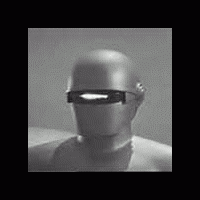Tin nhắn: 25
Nội dung: English
nornen (Xem thông tin cá nhân) 23:30:22 Ngày 10 tháng 9 năm 2014
morfran:If the subjects are different in both clauses, the subordinate clause is introduced by keConcise and correct. No more explanations needed. +10 internets from me.
sudanglo (Xem thông tin cá nhân) 11:02:51 Ngày 11 tháng 9 năm 2014
To drive a car - konduki aŭton, ŝofori aŭton.
Do you want cars to drive themselves? - Ĉu vi bonvenigus la sen-ŝoforan aŭton?
sergejm (Xem thông tin cá nhân) 11:17:08 Ngày 11 tháng 9 năm 2014
sudanglo:"to drive themselves" doesn't mean sen-ŝofora (driverless).
To drive a car - konduki aŭton, ŝofori aŭton.
Do you want cars to drive themselves? - Ĉu vi bonvenigus la sen-ŝoforan aŭton?
Railway automation does almost all is needed, but this doesn't mean train don't need engine driver.
sudanglo (Xem thông tin cá nhân) 11:45:20 Ngày 11 tháng 9 năm 2014
Perhaps you would like the term robo-aŭto.
Incidentally, the Docklands Light Railway in London has trains with no driver's cabin (do sen lokomotiv-estro), though perhaps a member of staff (konduktoro) patrols the train to limit fare-dodgers and to open the doors and make announcements in an emergency.
sergejm (Xem thông tin cá nhân) 11:52:27 Ngày 11 tháng 9 năm 2014
kaŝperanto (Xem thông tin cá nhân) 11:50:09 Ngày 12 tháng 9 năm 2014
sudanglo:There's a lot more to driving than steering, at least in countries where manual gear change is prevalent.What about "Ĉu vi volus memveturigantajn veturilojn?"
To drive a car - konduki aŭton, ŝofori aŭton.
Do you want cars to drive themselves? - Ĉu vi bonvenigus la sen-ŝoforan aŭton?
After all, the English term I hear most often is "self-driving car", and it gets around the scenario where the driver has a heart attack and the car becomes a "driverless car".

Also, the question really being asked pertains to vehicles in general as opposed to just cars.
Also, manual transmission for life!
 Automatics remove the fun from driving and you lose some control vs a manual.
Automatics remove the fun from driving and you lose some control vs a manual. johmue (Xem thông tin cá nhân) 12:07:55 Ngày 12 tháng 9 năm 2014
kaŝperanto:Cars that give themselves a lift?sudanglo:There's a lot more to driving than steering, at least in countries where manual gear change is prevalent.What about "Ĉu vi volus memveturigantajn veturilojn?"
To drive a car - konduki aŭton, ŝofori aŭton.
Do you want cars to drive themselves? - Ĉu vi bonvenigus la sen-ŝoforan aŭton?
sudanglo (Xem thông tin cá nhân) 12:17:20 Ngày 12 tháng 9 năm 2014
If the driver opens the door and jumps out, then the car is for a time sen ŝoforo, but again that doesn't make it memkonduka, which has to be a more permanent feature of the car.
A rapida aŭto doesn't stop being a rapida aŭto when it is parked, and an intelligenta homo can occasionally act stupidly.
Clarence666 (Xem thông tin cá nhân) 17:02:19 Ngày 12 tháng 9 năm 2014
RiotNrrd (Xem thông tin cá nhân) 18:10:14 Ngày 14 tháng 9 năm 2014
senŝofora aŭto: any car lacking a driver for any reason
senŝoforaŭto: any car that is meant to be driverless, at least some of the time (i.e., it has those capabilities, although they may be able to be turned off or overridden)
The pronunciation is sufficiently different that it is reasonably easy to distinguish between the two, if spoken rather than written.
Could throw an additional "o" in the middle, and maybe even a hyphen: senŝoforoaŭto or senŝoforo-aŭto. I personally like my first example best, though, as the extra "o" doesn't really add much beyond an extra syllable. The hyphen clarifies it a bit when written, but I'm not sure how necessary that is (and if you don't use the extra "o", it isn't at all).





